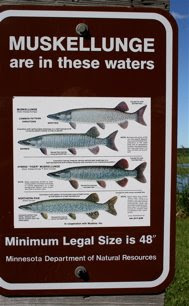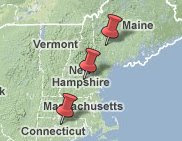Group photo with a few people missing.
Though I had initially planned to take the entire day off, I couldn’t resist a short trip over to the public boat dock on the other side of the lake, where the big boat was being put into the water.
Boat Launch
One of the signature events of the annual reunion is for the kids to go water-skiing and tubing (hauled over the water on a disk-shaped canvas raft) on Lake Plantagenet. Because the Thorson boat docked there is only 15 horsepower, we must use my bother Thor’s more powerful boat, which is docked at North Long Lake in Brainerd. For a few hours of fun, there are two round-trips for the boat on Long Lake and Plantagenet, and four round-trips for two autos at both lakes.
Matt, an employee of the Minnesota Department of Natural Resources majoring at nearby Bemidji State University, was waiting at the boat launch to check out our boat.
Matt enters data regarding my brother's boat before it can put it into the water, Lake Plantagenet, Minnesota.
He has a summer internship working as a boat launch inspector. He’s not there every day, but is rotated to different launches on a schedule set by his supervisors. On many days, he said, there is no inspector there.
Water at boat launch is clear, with a porridge of wave-broken weeds in the swash zone.
His job is to take note whether the boat has a particular sticker, which informs him that the owner of the boat has already had “the lecture” on invasive species. This saves Matt time. Next, he asks several simple questions about the point of origin of the boat, how long it’s been out of the water, and where it will go next. This information, when compiled into a large data base for thousands of users, will be used to track the spread of invasive plants, and to inform a study by the University of Minnesota about the habits of recreational boat users.
With respect to the inspections, the main concerns here are milfoil and zebra mussels. There are other management issues as well. The muskie sign is one indicator.
Sign at boat launch, Lake Plantagenet, Minnesota.
It’s the apex predator of northern lakes, and therefore the most sought after sport fish in Minnesota.
The fisheries scientists at DNR work with the social scientists to write regulations that try to optimize the balance between sport fishing and long-term stability of the freshwater ecosystem. At the present time, a muskie has to be four feet long before it can be taken from the water. Those are only the largest individuals, the ones that your “manhood” can be most seriously tested, presuming that’s an issue at all.
He reported that this was a particularly good lake to work on because 70-80% of the residents know about milfoil. In fact, the lake has a strong association composed of shoreline property owners who pay half of Matt’s summer salary. That is matched by the state DNR. This is a wonderful model because it puts the onus of care on those who are, or will be, most affected, a good example of think locally, act locally. Of course the lake associations need the help of the much stronger state agency, which takes the broader view. So far on the trip, this is my first point of contact with a government agency responsible for overseeing and regulating lake activities.
Matt ties with Robert – from Costello’s Bar in Saint Paul -- for the shortest responses to both my questions. Matt is having fun; even if his principal job is to manage what he likes the least about Minnesota Lakes. No doubt he will have a successful future in wildlife management, his major.
Clara de Loon
When we were at Walden Pond nearly two weeks earlier, Kristine felt that we needed a traveling companion who wouldn’t be too much trouble. In the Shop at Walden Pond, which is run by the Thoreau Society, we bought a toy loon being marketed by the National Audubon Society. When squeezed just right, it emits the familiar cry of the loon.
We presume that Clara appreciated the chance to sit around looking at the lake, playing Bocce Ball, and taking a boat ride.
After leaving Walden Pond, we decided that her name was to be Claire, named after the Debussy piece “Claire de Lune.” We would call her Clara. Having a loon from Walden Pond travel to Minnesota makes sense because Thoreau was very enamored with this species, and because the common loon is Minnesota’s state bird. Real-life loons on Plantagenet have been making wonderful music for three days now.
From here on, the day was limited to family activities. The food never stopped and the beer flowed freely. News was shared, lawn games were played, and jigsaw puzzles were put together. The lake beckoned with a refreshing swim for me, boat rides for the seniors, power-tubing for the kids, and the annual “girls water conference,” during which three grown women spent a few hours talking safely out of reach of men while anchored on an inflatable raft.
The rest of the day didn’t involve water at all. Thorson family reunions always involve guy talk in the garage, where my dad hangs out.
Leif, Thor, and Jim Thorson, were doing woodwork during the reunion.
The purpose was to make a lawn game, which teams of six people played for hours. My brother Thor posed after one of the victories.

Pickup trucks capable of hauling a large boat or trailer are the vehicles of choice for many Minnesotans.
There's always a private concert among us. I played the wood block and was featured during one solo. Others are far more talented.
Kimberly, Eric, and Uncle Keith.
I was asleep by 11 PM. I heard that the party lasted past 1:00.












